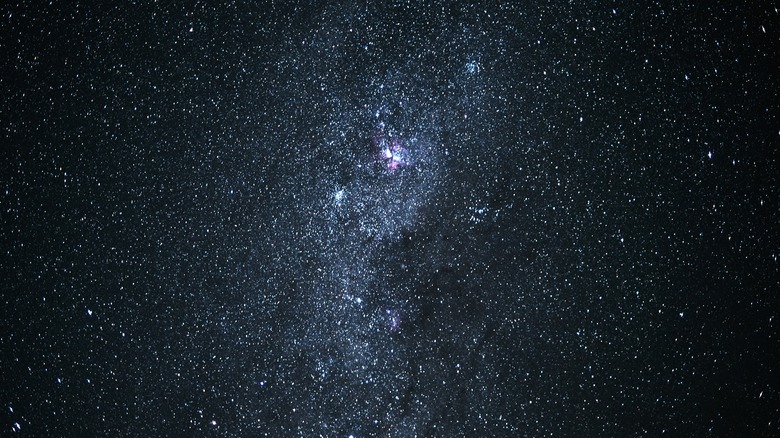An Exploding Star Is About To Be Visible From Earth: Here's When You Can See It
When people think of a star exploding, they think that's it. The star is gone forever. Well, a little binary system 3,000 light years away called T Coronae Borealis (also referred to as the "Blaze Star" and "T CrB") explodes roughly every 80 years. This system has both a white dwarf and a red giant. The white dwarf's gravitational pull is strong enough to continuously siphon off hydrogen from its significantly older red giant neighbor, resulting in the buildup of pressure and heat. Eventually, this coalescence accumulates to a boiling point and initiates a thermonuclear explosion, otherwise known as a nova. A nova isn't the same as a supernova.
A recurring nova simply sends the buildup of pressure and heat outward while the star remains intact. A supernova, on the other hand, is an explosion that destroys the star and has a severely negative impact on nearby planets. The last nova that came from T CrB was back in 1946. Well, technically, it happened 3,000 years before 1946, and the light just got to us then. NASA is predicting that it will be visible again in September 2024. Not only is this a phenomenal event that many only have a chance to see once in their lifetime, but you also don't even need some advanced NASA invention to see it. It will be visible with the naked eye.
How to see T Coronae Borealis's nova
A German man named Burchard first discovered T Coronae Borealis 800 years ago in 1217 while looking up at the Northern Crown, a horseshoe-shaped curve of stars west of the Hercules constellation. He described the event as, "a faint star that for a time shone with great light." Look for the two brightest stars in the northern hemisphere. Those stars are known as Arcturus and Vega. If observers trace a straight line from one of the stars to the other, they will find Hercules and the Corona Borealis.
Astronomers don't know the exact day or even the time this recurring nova will take place, but there are signs that it is coming. Celestial bodies experience what's known as the pre-eruption dip, a sudden decrease in brightness that happens about a year before erupting. The American Association of Variable Star Observers (AAVSO) noticed T CrB faded in March 2023. Bradley E Schaefer, Professor, Department of Physics and Astronomy at Louisiana State University told ABC News, "it's going to be one of the brightest stars in the sky." The explosion should be visible for "only a couple of days."
This white dwarf is typically at magnitude +10, which isn't bright enough for observers to see without a telescope. However, it will jump to magnitude +2 when it erupts. So, if you don't see the star at first, you will definitely see it when it explodes. You can bet that NASA will be using its newest space telescope to watch the event.

